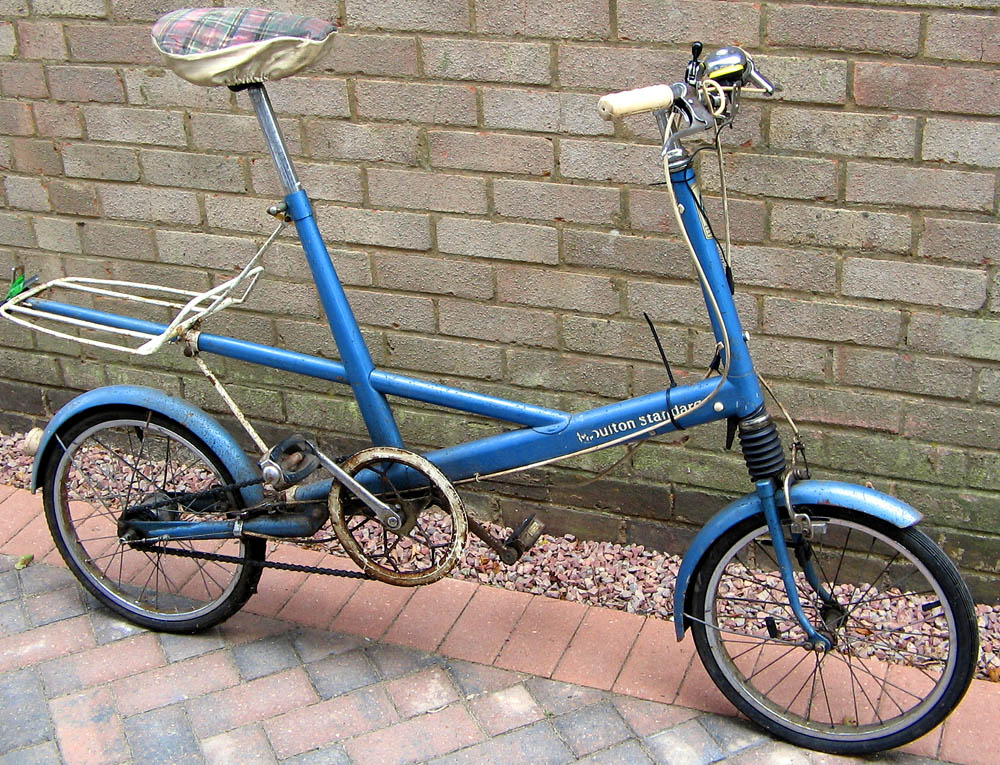Twenty years before the first spaceframe Moulton bicycle, the original F-frame Moulton bicycle was launched. Alex Moulton, an engineer with experience in the automotive industry, and a recreational cyclist, decided to go back to first principles and question every aspect of the design of bicycles.
Questions such as :
Why had the design of the bicycle not changed in any fundamental sense since the "safety bicycle" was developed, replacing the Penny Farthing in the 1880s.
Why, when the wheel sizes of most road going vehicles had reduced with the improvement in road surfaces, had the bicycle wheel remained so large?
After 5 years of development, the original Moulton Bicycle was launched and it was a revolutionary design. The concept consisted of a number of key principles :
- Small wheels were found to be stronger and lighter than large wheels. They produced less wind resistance, could be more easily accelarated.
- Small wheels provided no more rolling resistance than large wheels, provided that high pressure tyres (which in 1962 meant 60 psi) were used. The optimum wheel size was found to be 16-17 inches.
- Small wheels provided a more bumpy ride on paved roads, so the use of suspension was essential.
Additionally, the following features are common to the Moulton bicycle range:
The new bicycle was a revolutionary design, and for a while Moulton was the largest bicycle manufacturer in Britain. The following video dates from the time of the launch of the Moulton bicycle.
These principles are the core of the Moulton concept, and have remained so through to the very latest spaceframe models.
The Moulton Range
The Basic Range
Continental – the cheapest Moulton with a single speed hub and back pedal brake.
Automatic – replaced the Continental, had a two speed hub and back pedal brake.
Standard – the basic model, 4 speed hub.

Deluxe – a higher spec model, 4 speed hub
Speed – similar to a standard but with a sportier riding position, 4 speed hub
Stowaway – the first separable moulton, 2 speed hub with back pedal brake.
Safari – a fully equipped model for touring. 4 speed hub with optional 2 speed derailleur.
Speedsix – a racing model with 6 speed derailleur gears.
The Standard and Deluxe are the most common models by far, and are quite inexpensive to buy. The other models vary in terms of rarity, desirability, and price.
The S Range
The S range is very rare, and very collectable. Each model is a higher spec version of the original Deluxe, Safari and Stowaway with slightly larger 17inch wheels, lighter components, and optional chrome finish.
The picture below is a Moulton S Safari in chrome finish, from Ken Butterfield's photos on Flickr
Only around 10 S Speeds were produced and the location of most of them is known. However, it looks like there may be a few still unaccounted for. Most F-frame collectors dream of finding an S Speed in a skip or a garage somewhere!
After the Raleigh takeover the following models were produced:
Moulton Major – an updated Standard
Moulton Major Deluxe – an updated Deluxe
The Mark 3 / Mark III / Mk 3
This was a new departure in design, with the most recognisable feature being the rear triangle and squashball suspension. This model has a shorter wheelbase than the older Series 1 and 2 models and was fitted with a 3 speed hub with drum brake.
There were also a number of other models produced - smaller wheel versions for children/teenagers, export models, and models made abroad under licence. These will be the subject of a post on another day!




